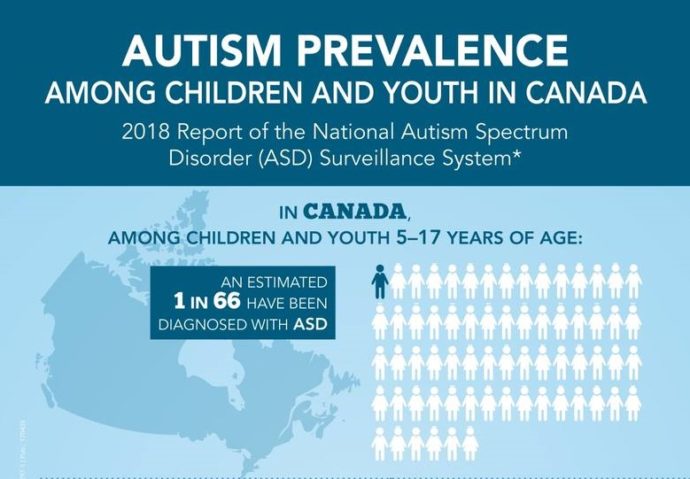
1 in 66 Canadian children diagnosed with autism
A new report says an estimated one in every 66 Canadian children and youth aged five to 17 has autism spectrum disorder.
The report by the Public Health Agency of Canada, released on Thursday, is the first detailing the national prevalence of the neurodevelopmental disorder and is in line with estimates in the United States.
Autism spectrum disorder is typically detected in early childhood and causes impairments in communication skills and social interactions, often combined with repetitive behaviours and restricted interests or activities.
Boys are four to five times more likely to be diagnosed with autism spectrum disorder, or ASD, than girls.
“Understanding trends and patterns in ASD diagnosis is essential to developing meaningful programs and services to support people living with ASD and their families,” said Dr. Theresa Tam, chief public health officer, noting that the estimates establish a baseline that will help researchers determine if prevalence rates are changing over time.
The report includes data from six provinces and one territory and found prevalence ranged from a high of one in 57 children in Newfoundland and Labrador, to one in 126 in Yukon.
Newfoundland and Labrador, Nova Scotia, Prince Edward Island, New Brunswick, Quebec, British Columbia and Yukon all contributed data to the report, a spokesperson for the Public Health Agency of Canada said.
When asked by CBC News why numbers from the other provinces and territories (Alberta, Saskatchewan, Manitoba, Ontario, the Northwest Territories and Nunavut) were not included, the Public Health Agency of Canada (PHAC) said it could not speak for those jurisdictions.
However, “PHAC continues to engage with the provinces and territories that did not participate in the 2018 report on participation for future reports,” a spokesperson said in an email.
Despite the absence of data from those jurisdictions, she said, the agency is confident that the report is accurate.
“The results represent 88 per cent of the population of 5-17 year olds in the participating provinces and territories, which represents approximately 40 per cent of 5–17 year olds in Canada,” the email said. “From a statistical perspective, this is considered representative.”
“By comparison, while research from the United States has been considered among the most comprehensive, the most cited U.S. data capture 8.5 per cent of American eight year olds from 11 participating sites.”
Canada does not have a national autism strategy, though this year’s federal budget earmarked $20 million over five years towards ASD. The money would include funding for a network to connect people with ASD and their families to information, resources and employment opportunities, and community-based projects to strengthen health, social and educational programs.
A Senate committee called for a national autism strategy more than 10 years ago in a report called Pay now or pay later: Autism families in crisis.
Advocacy group Autism Canada welcomed the report, saying the prevalence findings reflect what the organization is “witnessing in the autism community” and that “the prevalence of autism is on the rise.”
“Regardless if this increase is due to better diagnostics, increased awareness or increased incidence, there is an urgent need for a national autism strategy,” said Laurie Mawlam, Autism Canada’s executive director, in a statement posted Thursday on the organization’s website.








